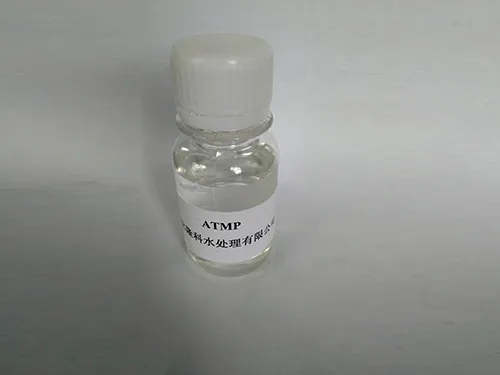Poly Aluminum Chloride and Polyacrylamide: Key Players in Water Treatment
What is Poly Aluminium Chloride (PAC) is a question many people ask when looking for effective water treatment solutions. Poly Aluminium Chloride is a versatile chemical compound used predominantly for water treatment and purification. It is a coagulant, meaning it helps to bind small particles in water into larger, easily removable flocs. PAC is highly effective in removing impurities from water, including suspended solids, organic materials, and color. This makes it widely used in industries such as municipal water treatment, industrial wastewater management, and even in the textile, paper, and food industries.

The unique chemical structure of Poly Aluminium Chloride allows it to work efficiently even in low concentrations. PAC is often preferred over other coagulants like alum because of its lower dosage requirement, which leads to cost savings and better overall performance. PAC can be used in both acidic and alkaline water, making it highly versatile and useful across various applications. In summary, what is Poly Aluminium Chloride? It is a critical chemical used in water purification to remove impurities and improve water quality.
Poly Aluminium Chloride Uses in Water Treatment
Understanding poly aluminium chloride uses helps to highlight the importance of this chemical in water treatment processes. Poly Aluminium Chloride is mainly used in water treatment because of its ability to coagulate impurities efficiently. Its uses span various industries, from municipal drinking water plants to industrial effluent treatment. PAC is effective in clarifying water, reducing turbidity, and removing contaminants, making it essential for ensuring the safe supply of clean water.
In addition to its use in water treatment, poly aluminium chloride uses also extend to paper manufacturing, textile processing, and even in some oil recovery applications. It is especially valued in the food industry, where it is used to treat water for food and beverage production. The versatility of PAC ensures that it can meet the specific requirements of different sectors. Whether used in large-scale municipal plants or small-scale industrial applications, poly aluminium chloride uses continue to grow as industries demand higher standards for water purity and efficiency.
Polyacrylamide Formation and Its Impact on Water Treatment
Polyacrylamide formation is a crucial process in the production of polyacrylamide, a polymer widely used in water treatment. Polyacrylamide is synthesized by polymerizing acrylamide monomers, which can then be used as a flocculant in water treatment systems. The polymerization process creates long, chain-like molecules that have an affinity for particles in water, helping to agglomerate them into larger clusters that can be easily removed.
The polyacrylamide formation process can be adjusted depending on the specific application requirements. The polymer can be made in different forms, such as anionic, cationic, or non-ionic, depending on the types of particles that need to be removed. This flexibility makes polyacrylamide a go-to solution in a variety of industries, including municipal water treatment, mining, and oil recovery. The ability of polyacrylamide to be tailored to different conditions ensures that it remains one of the most effective and widely used materials in water purification.
Polyacrylamide Price per Kg and Cost-Effective Solutions
When considering the use of polyacrylamide, one of the primary concerns for industries is the polyacrylamide price per kg. Understanding the cost of this polymer is essential for industries that need to use it in large quantities. While polyacrylamide can be a cost-effective solution for water treatment, the price can vary depending on factors such as the type of polyacrylamide, its quality, and the volume purchased.
The polyacrylamide price per kg is generally determined by its formulation and intended application. For example, cationic polyacrylamide, which is often used in municipal water treatment plants, might cost more than anionic polyacrylamide, which is used in wastewater treatment. Bulk purchasing can also reduce the cost significantly, making polyacrylamide an affordable option for large-scale industrial applications. Despite the price variations, the benefits of using polyacrylamide, including its efficiency in removing impurities and improving water quality, outweigh the costs for most industries. Understanding the polyacrylamide price per kg helps businesses make informed decisions while ensuring cost-effective solutions for their water treatment needs.
Poly Aluminium Chloride FAQs
What is Poly Aluminium Chloride used for?
Poly Aluminium Chloride is used primarily for water treatment. It acts as a coagulant to remove suspended particles, organic materials, and contaminants from water. It is widely used in municipal water treatment plants, industrial wastewater management, and various other industries like paper, textile, and food production.
How does Poly Aluminium Chloride work in water treatment?
Poly Aluminium Chloride works by causing particles in water to clump together into larger masses, which can then be easily removed. This coagulation process helps to clarify the water, making it cleaner and safer for consumption and use.
What is Polyacrylamide formation?
Polyacrylamide formation is the process of polymerizing acrylamide monomers to create long-chain polymers that are used as flocculants in water treatment. The polymer's molecular structure enables it to bind suspended particles in water, helping to remove them more effectively.
How is Polyacrylamide priced?
The polyacrylamide price per kg depends on factors such as its formulation (cationic, anionic, or non-ionic), quality, and the intended application. Bulk purchases and long-term contracts can often lead to lower prices, making polyacrylamide a cost-effective option for large-scale water treatment.
Why is Polyacrylamide used in water treatment?
Polyacrylamide is used in water treatment because of its excellent ability to agglomerate suspended particles, making it easier to remove them from the water. This makes it highly effective in municipal water treatment, industrial wastewater management, and other sectors that require water purification.
-
Water Treatment with Flocculant Water TreatmentNovaĵojJun.12,2025
-
Polymaleic AnhydrideNovaĵojJun.12,2025
-
Polyaspartic AcidNovaĵojJun.12,2025
-
Enhance Industrial Processes with IsothiazolinonesNovaĵojJun.12,2025
-
Enhance Industrial Processes with PBTCA SolutionsNovaĵojJun.12,2025
-
Dodecyldimethylbenzylammonium Chloride SolutionsNovaĵojJun.12,2025





